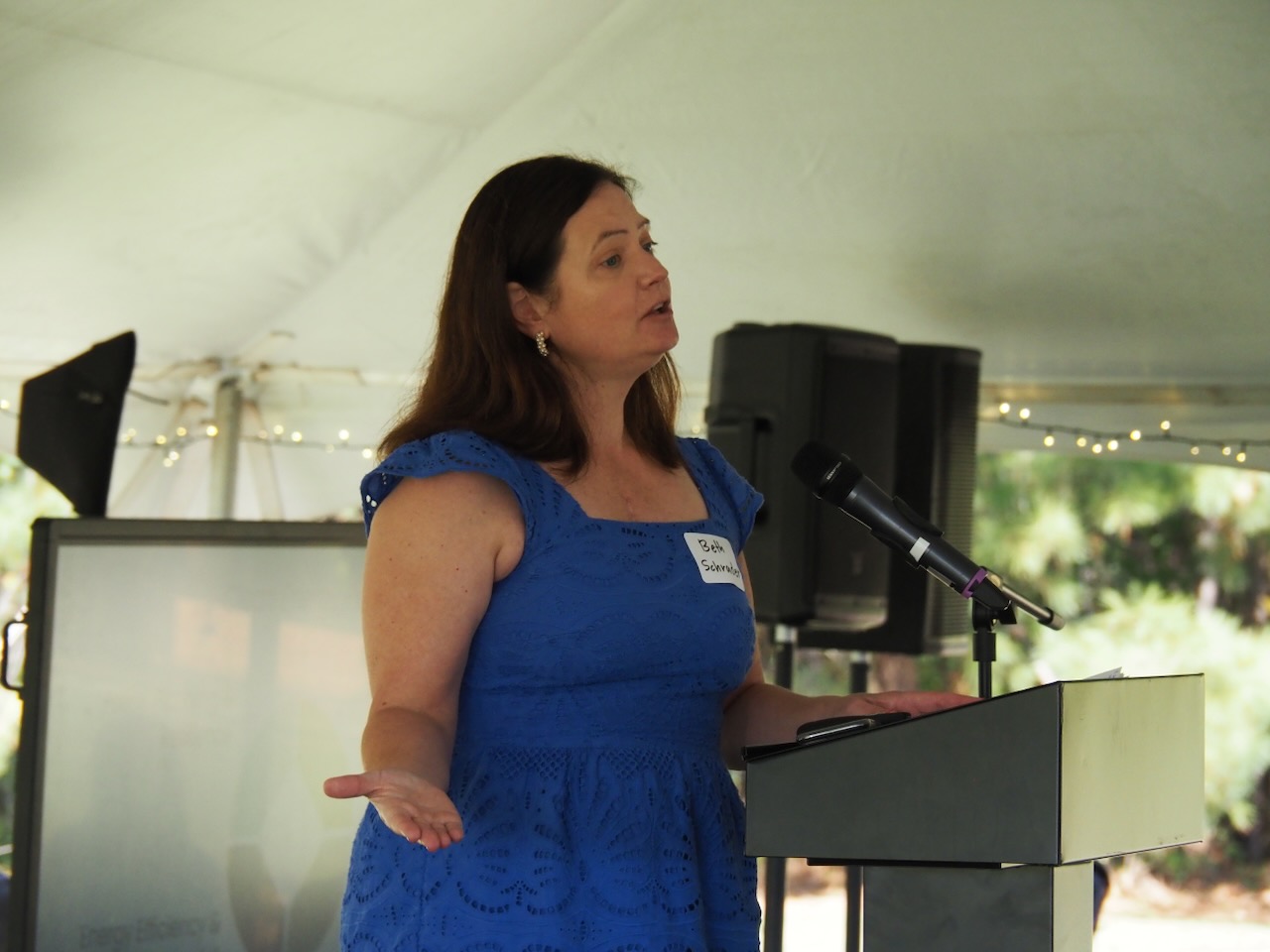The director of the state’s energy office said there are economic opportunities that can come with the state’s push for renewable energy.
With an early introduction via video from Governor Roy Cooper and a personal introduction from Center for Energy Education Executive Director Mozine Lowe, Beth Schrader gave the keynote address at this morning’s SolarFEST.
Schrader told the audience that North Carolina A&T State University has become the lead institution in this push and received a $23.7 billion grant to expand the same kinds of programs that SolarFEST and the center have centered on.
Schrader said with the state’s clean energy plan, “A lot of people see the plan and say ‘this thing is 400 pages long and no one is going to read it.’ It comes down to some basic things we’re trying to do within the state and it’s something you all are doing right here. And that’s looking and saying how do we think about our planning processes in advance.”
It’s also about thinking how the state can not only have clean energy but healthier communities that are more vibrant, that have better jobs and that have a workforce that can move the state forward in the economy.
“We talk about resilience,” she said. “One of the challenges we see particularly in rural communities is when you get to the edge of the grid sometimes the electricity isn’t as resilient or reliable as we’d like.”
The state is trying to determine how it uses the money from the Infrastructure Investment and Jobs Act and the Inflation Reduction Act “to say let’s go to these grid-edge communities and create that level of resilience, whether that be with solar and battery, whether it’s storage, whether it is putting in micro grids. The goal of this is to say how we can improve the community.”
The state is also looking at how it accelerates renewables and whether it is through wind or solar or other clean energy such as hydrogen. “We’re also looking to say can we do this not only through clean energy generation but also on the transportation side.”
The energy office is already looking at how clean energy buses can be smartly powered and effectively charged in all communities.
Clean energy represents an opportunity, Schrader said. “If we’re going to be doing this infrastructure can we improve the resilience of the grid? Can we improve the performance of energy in our community? Can we create jobs with the projects we’re putting in place?”
She said the state is going to use the power of its purse as it does the projects to ensure it has its workforce. “It’s about bringing that economic opportunity and jobs to each one of our different communities who’ve been left behind and making sure they don’t remain left behind.”
Energy affordability or lack of affordability is enormous, she told the audience. “A lot of it has to do with weatherization and it has to do with looking at things like propane gas and switching over to electricity.
“You have to have the infrastructure to be able to do that and we have to have programs to be able to reach out to folks who may not be able to afford it on their own to make that energy affordable and give them access to clean energy through programs like community solar.”
Schrader said the state needs the public’s help. “This is not something that’s going to happen by the state going out and doing it. It’s not going to happen by any one entity trying to carry the standard forward and make it happen. It’s going to take all of us working together. The benefit is it reflects who we are and allows each community to design what it’s going to look like in their community.”
She said the state encourages everyone to get together and talk to elected officials and spend time with industry partners. That includes discussions with nonprofits. “We’re going to have to work together in order to make this happen and we need you to be involved and we need you to be advocating for your communities.”
Schrader said while the state has made great strides with solar, in reality the work has just begun. “It is a huge opportunity for our state. It’s not a red issue or a blue issue – it’s a money colored green issue. It’s all about economic opportunity and jobs.”
Cooper in his video message to the audience said, “Conversations like these are important as we transition to a clean energy future. Solar energy is helping us get there. We know we need to fight climate change and as we do we’re putting money into the pockets of many rural North Carolina families to create great community jobs and solar power is bringing those jobs to power our homes and businesses.”
Last fall Cooper signed bipartisan legislation to reduce carbon emissions, a move that will push the state to use more solar energy. “I’ve also introduced executive orders like clean transportation and environmental justice.”
He specifically thanked the center for “doing this important work to educate people on how solar energy benefits us all.”








